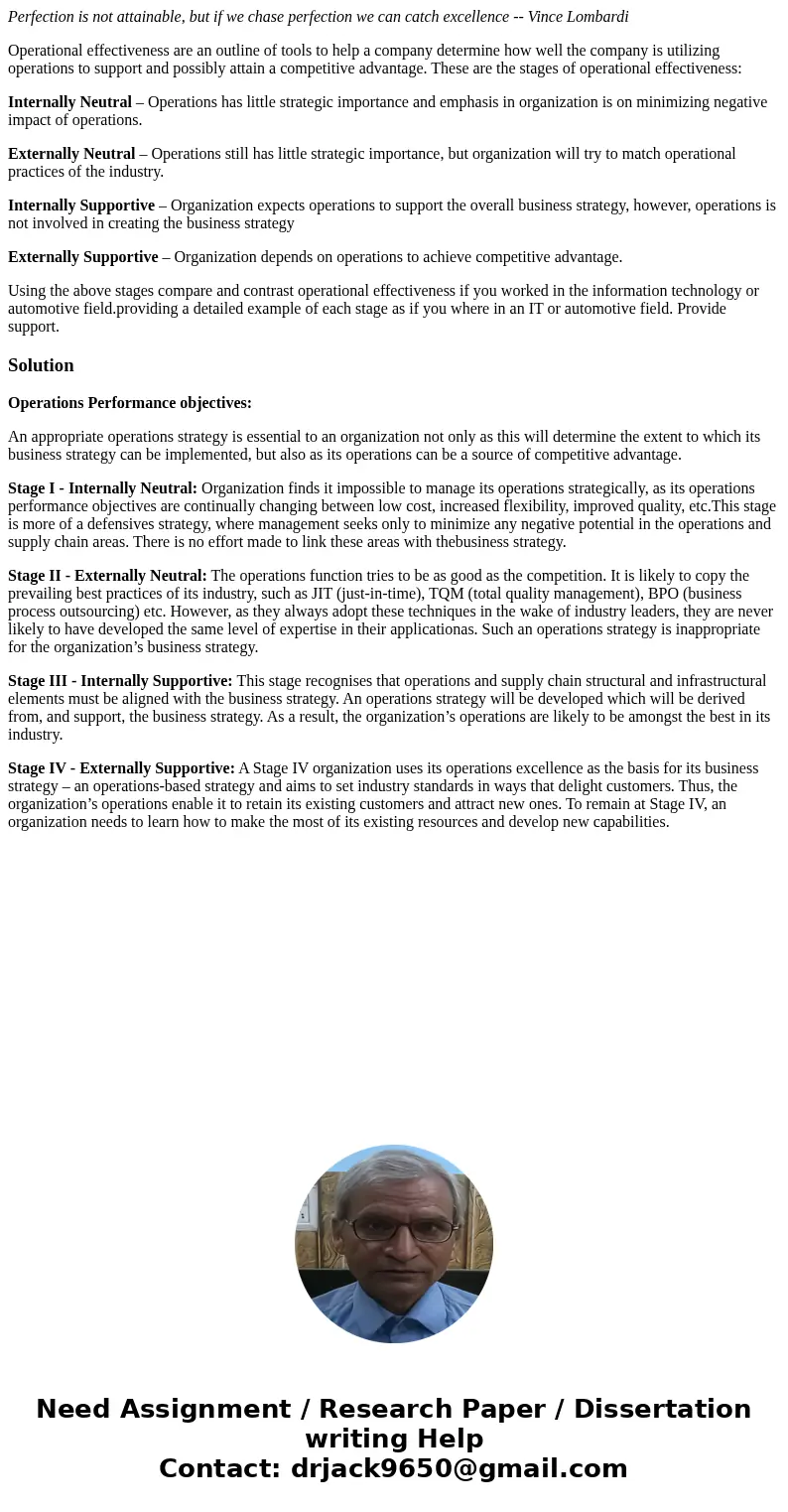Perfection is not attainable but if we chase perfection we c
Perfection is not attainable, but if we chase perfection we can catch excellence -- Vince Lombardi
Operational effectiveness are an outline of tools to help a company determine how well the company is utilizing operations to support and possibly attain a competitive advantage. These are the stages of operational effectiveness:
Internally Neutral – Operations has little strategic importance and emphasis in organization is on minimizing negative impact of operations.
Externally Neutral – Operations still has little strategic importance, but organization will try to match operational practices of the industry.
Internally Supportive – Organization expects operations to support the overall business strategy, however, operations is not involved in creating the business strategy
Externally Supportive – Organization depends on operations to achieve competitive advantage.
Using the above stages compare and contrast operational effectiveness if you worked in the information technology or automotive field.providing a detailed example of each stage as if you where in an IT or automotive field. Provide support.
Solution
Operations Performance objectives:
An appropriate operations strategy is essential to an organization not only as this will determine the extent to which its business strategy can be implemented, but also as its operations can be a source of competitive advantage.
Stage I - Internally Neutral: Organization finds it impossible to manage its operations strategically, as its operations performance objectives are continually changing between low cost, increased flexibility, improved quality, etc.This stage is more of a defensives strategy, where management seeks only to minimize any negative potential in the operations and supply chain areas. There is no effort made to link these areas with thebusiness strategy.
Stage II - Externally Neutral: The operations function tries to be as good as the competition. It is likely to copy the prevailing best practices of its industry, such as JIT (just-in-time), TQM (total quality management), BPO (business process outsourcing) etc. However, as they always adopt these techniques in the wake of industry leaders, they are never likely to have developed the same level of expertise in their applicationas. Such an operations strategy is inappropriate for the organization’s business strategy.
Stage III - Internally Supportive: This stage recognises that operations and supply chain structural and infrastructural elements must be aligned with the business strategy. An operations strategy will be developed which will be derived from, and support, the business strategy. As a result, the organization’s operations are likely to be amongst the best in its industry.
Stage IV - Externally Supportive: A Stage IV organization uses its operations excellence as the basis for its business strategy – an operations-based strategy and aims to set industry standards in ways that delight customers. Thus, the organization’s operations enable it to retain its existing customers and attract new ones. To remain at Stage IV, an organization needs to learn how to make the most of its existing resources and develop new capabilities.

 Homework Sourse
Homework Sourse